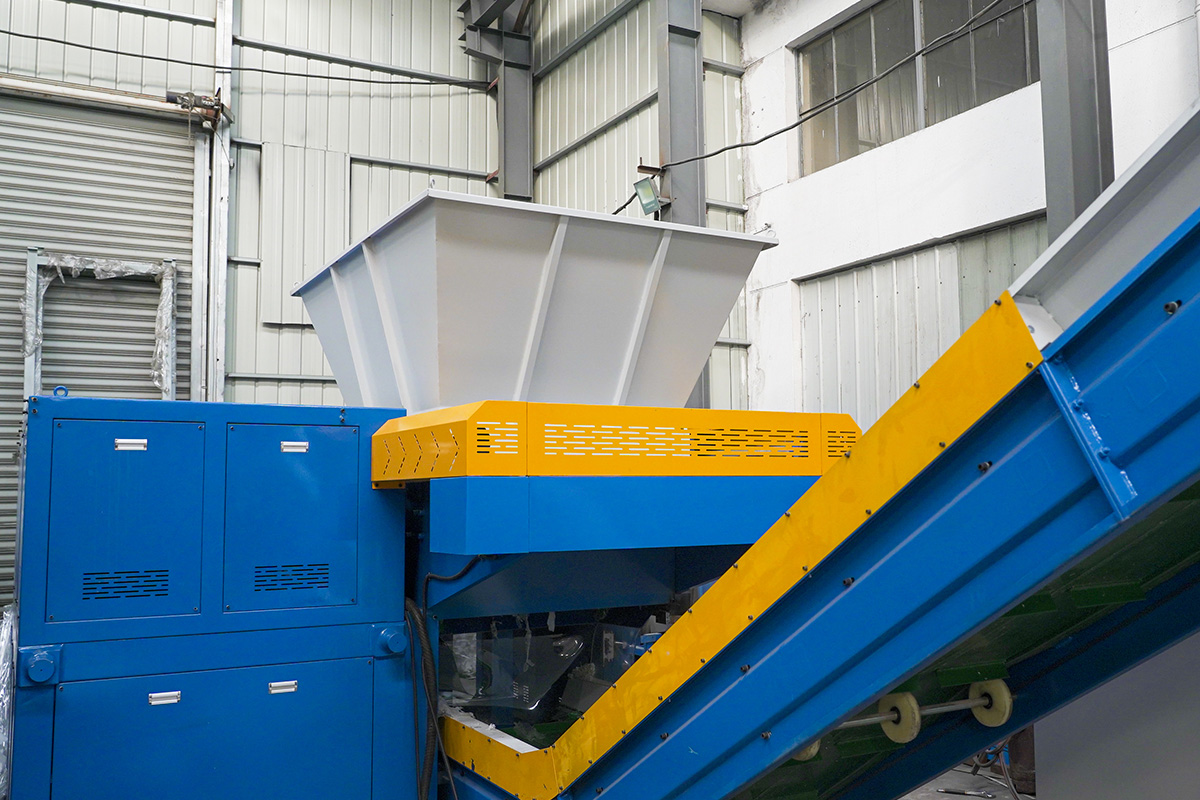Contents
Introduction
Explore the core composition and operational principles of a single-shaft shredder, a vital piece of equipment designed for efficient waste management. Our focus here is on understanding each component’s role in optimizing the shredding process.
Components of a Single-Shaft Shredder
A single-shaft shredder is primarily used to break down various waste materials. Here’s a detailed look at its main components:
•Shaft: Central to the shredder, the shaft drives the blades to effectively crush materials. Typically crafted from robust high-strength steel, it’s engineered to endure heavy-duty operation.
•Blades: Mounted on the shaft, these crucial elements shear, tear, and grind the input materials. Made from durable alloy steel, the blades ensure optimal shredding with extended longevity.
•Feed Hopper: This component guides waste into the shredder. Its design varies based on the type of materials processed and the specific requirements of the operation.
•Discharge Outlet: Situated at the base, it facilitates the exit of shredded particles, designed to accommodate different shredded material sizes.
•Drive System: This includes a motor, reducer, and coupling to transfer power efficiently from the motor to the shredder’s mechanical parts.
Operational Principle
Materials enter through the feed hopper, get fragmented by the blades, and are propelled until they reach the desired size, exiting through the discharge outlet. This process involves multiple mechanical forces like friction and shearing, ensuring efficient waste breakdown.
Single-Shaft vs Double-Shaft Plastic Shredders
•Single-Shaft Shredders: Ideal for softer, less dense materials, offering cost-effectiveness with lower maintenance needs.
•Double-Shaft Shredders: Suited for harder, denser materials, providing higher throughput and more uniform particle size.
High-Quality Output and Efficiency
Single-shaft shredders produce consistent, high-quality fragments suitable for recycling, with a design focused on minimal maintenance and high operational efficiency. The adaptability in screen size allows precise control over the output material size.
Conclusion
Single-shaft shredders are indispensable in waste processing industries. They stand out for their efficiency, high-quality output, and low upkeep costs. Available in various sizes and configurations, these machines meet diverse industrial needs efficiently.
Consider integrating a single-shaft shredder to enhance your material handling processes, ensuring efficient and cost-effective waste management.
Specification
| Model | DS-600 | DS-800 | DS-1000 | DS-1200 |
|---|---|---|---|---|
| Capacity(kg/h) | 30kW | 45kW | 2*37kW | 2*45kW |
| Hydraulic motor power | 4kW | 4kW | 5.5kW | 5.5kW |
| Knife material | SKD11 | SKD11 | SKD11 | SKD11 |
| Main motor power | Φ400 | Φ400 | Φ450 | Φ500 |
| Rotary diameter(mm) | 85 | 85 | 80 | 70 |
| Rotating speed(rpm/min) | 400-600 | 600-800 | 800-1200 | 1500-2000 |
Single-shaft shredders to better handle solid, thick pieces such as plastic purging, runners, pallets, and even wood, branches, and bones.
Double-shaft shredders use shear blades to cut the plastic material and are better suited for handling bulk volumes of hollow, light-weight plastics such as PE films, PP tubes, HDPE drums, and even rubber tires, automotive parts, and electronic waste.
INQUIRIES
Warranty
All recycling machines come with a 1 year limited warranty.
To get the latest prices and lead times, send us a message using the form below.








Comments are closed.